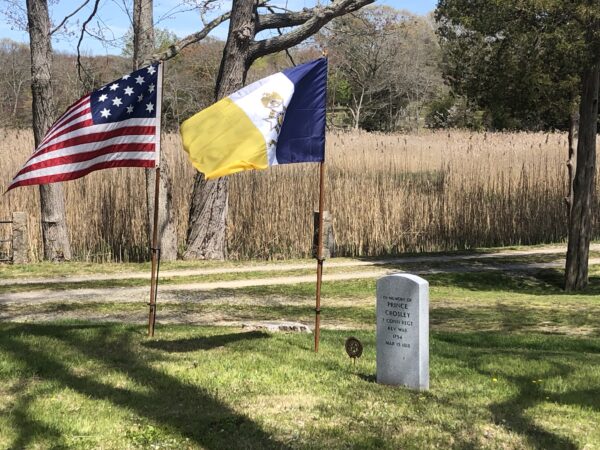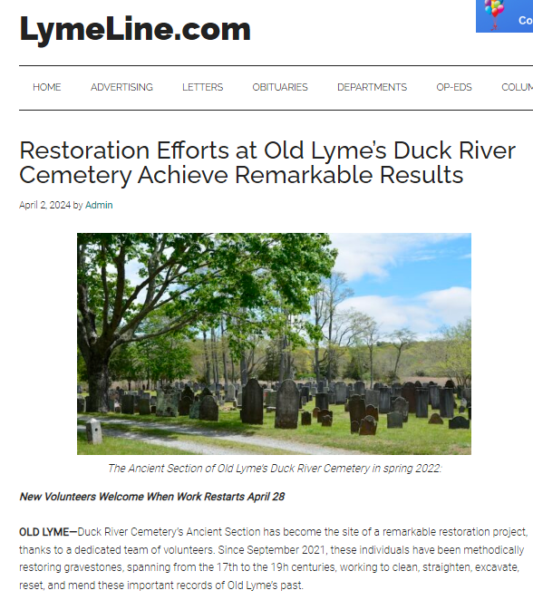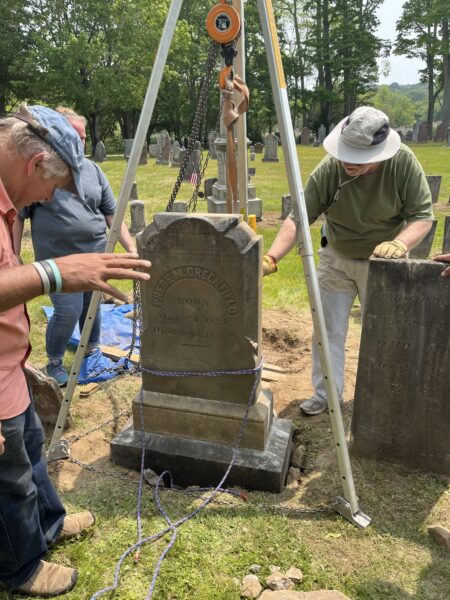STORIES IN STONE
Lewis Lewia's epitaph
One of more than 200 enslaved African-descended farmers, mariners, artisans, and domestic workers who contributed to Lyme’s prosperity, Lewis Lewia (1773-1852) served Col. Marshfield Parsons for some two decades. He likely provided agricultural labor on Parsons’s farm as well as domestic labor at Parsons Tavern, a stagecoach inn that offered respite to travelers along the coastal route from New York to Boston.
Church records tell us that “Lewis Negro servant to Col. Marshfield Parsons” was baptized in 1795. An eloquent verse epitaph on the “Negro servant’s gravestone,” its author unknown, was described by an early nineteenth-century visitor to Duck River Cemetery as “pure poetry.” Now worn and almost indecipherable, the epitaph suggests that Lewis Lewia remained an active church member, and testifies to the esteem in which he was held.
Here lies interred beneath
this mouldering sod an honest man
the noblest work of God,
Lewis Lewia.
Who finished life’s career
in his 79th year July 9, 1852,
in view of a better world
he was honest and pious
and
If this insures an heavenly rest
Then Lewis Lewia will long be blest.
No documents confirming Lewia’s manumission, or release from slavery, have been discovered, but in 1835 he owned a house on today’s Sill Lane. Census records tell us that he lived there with his wife Margaret Crosley Lewia, daughter of two persons enslaved in the household of Matthew Griswold, who later served as Connecticut’s governor.
Gravestones commemorating Margaret Lewia, their daughter Eunice Lewia who died unmarried at age 27, and their grandson John Henry, who died at age seven, stand nearby.
— Carolyn Wakeman
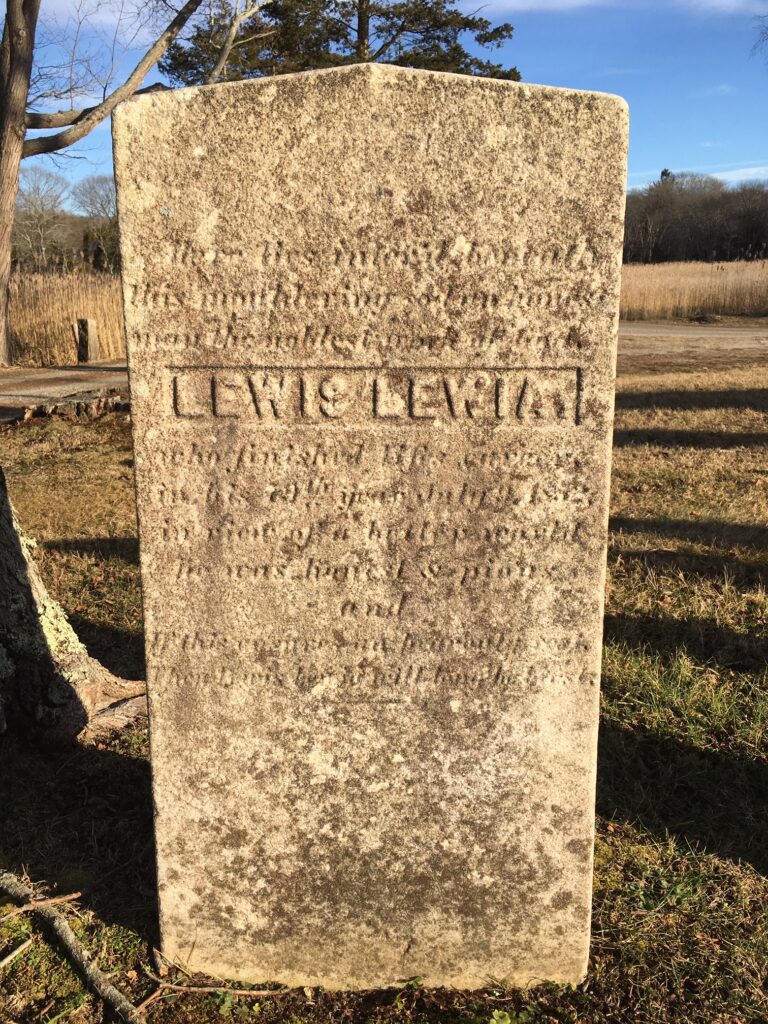
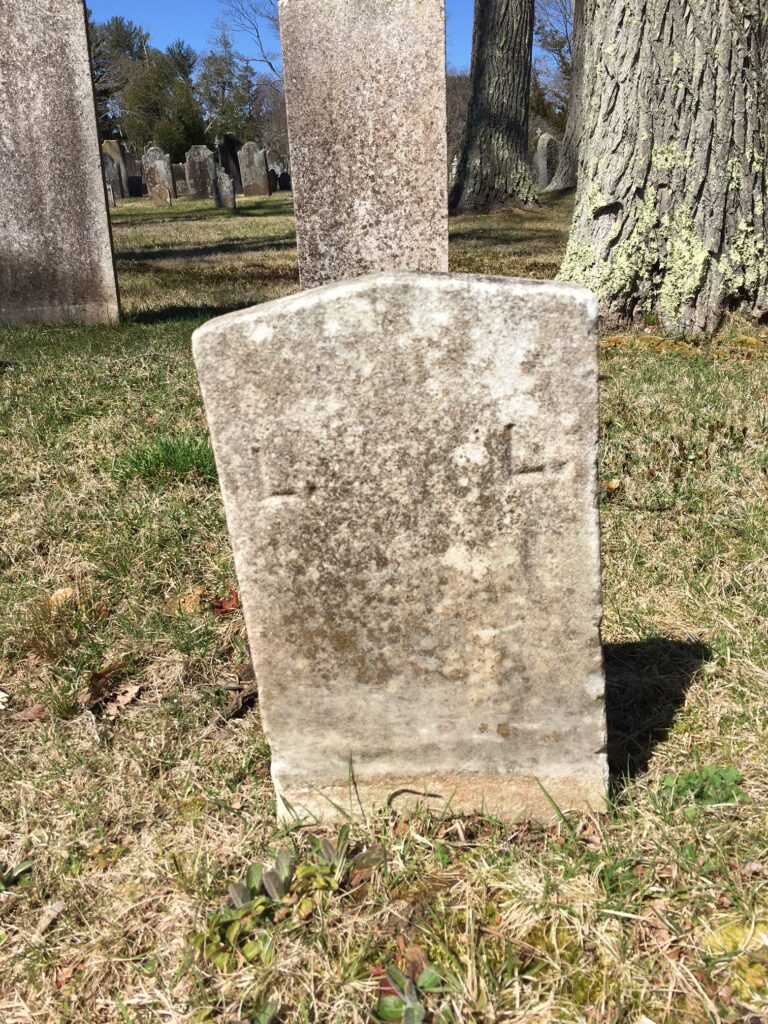
Gravestones in Duck River Cemetery have stories to tell about the lives of those who passed before us in the Lyme region and the events that shaped the development of a Connecticut town, distinguished by its prominent lawyers and ministers, its shipbuilding and maritime trade, its architecture and scenic landscape, and its contributions to education, conservation, and the arts.
